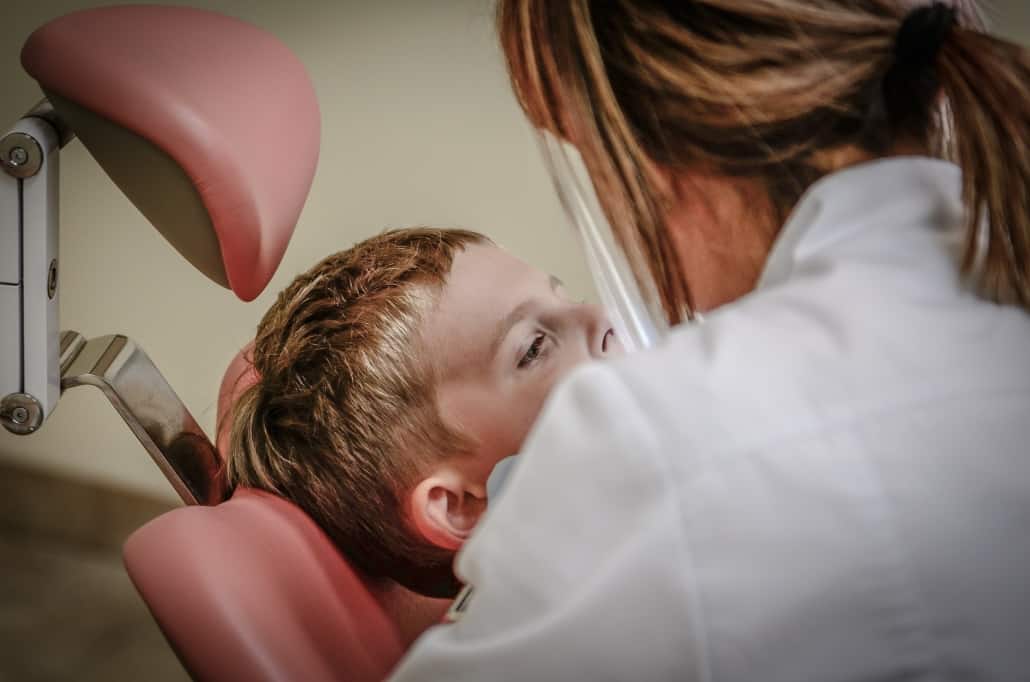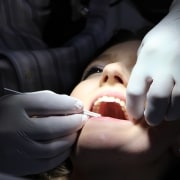What Is the Difference between Traditional Expanders and Clear Aligners?
Last Updated on January 15, 2021 by Gio Greenard
Modern orthodontic technology has come a long way since its beginnings. Nowadays, your options for having your teeth straightened can seem just as confusing as they are endless. At this time, you may be wondering, “What are traditional expanders?” or “What are clear aligners?” And what are the advantages of each?
These and other questions count among the most common ones an orthodontist hears in his/her practice. The purpose of this blog post is to clear up any misconceptions about these two treatment options and to inform you of the advantages and disadvantages of each type. Once you finish reading this post, you should feel better equipped to chat with your orthodontist about the best treatment option for you.
What Are Traditional Expanders?
It is likely that you know traditional expanders by their more common name: Braces. Many people get braces when they are going into their preteen and teenage years. That said, braces – or any other kind of orthodontic treatment for that matter – work for people of all ages. Indeed, you will meet many adults today who have decided to correct misaligned teeth or jaw.
How braces work is actually pretty straight forward. Your orthodontist attaches brackets, whether they be metal or plastic, to your teeth using dental cement. Once the cement dries, your orthodontic professional will fit your braces with a special wire, which puts gentle pressure on the teeth, forcing them to move into a new position in your mouth. The brackets hold the wire in place. The wire and not the brackets move your teeth. Each time you visit the orthodontist, the wire is changed out. After a year or two of these types of treatments, your teeth will have moved into better alignment. Traditional expanders cannot be removed without the help of an orthodontist.
It used to be that braces were primarily made of metal. However, plastic brackets, usually clear or white, make these dental treatments less obvious. Additionally, your orthodontist can affix brackets to the backs of your teeth, allowing you to move through your orthodontic work in a less unsightly way.
What Are Clear Aligners?
Clear aligners are dental technologies like Invisalign. These types of orthodontic apparatuses are made from plastic and mould around your teeth. The shape of the mould is changed periodically to help your teeth shift into a new position. Unlike traditional braces, these tooth aligners can be removed when you eat or brush your teeth. They look a bit like the mouth-guard that a ballplayer would wear to protect his teeth during a football game. However, they are not so “generic,” meaning that only you can wear your clear aligners. They are fitted for you.
Like the traditional expanders, they are designed to move your teeth by applying gentle pressure to your teeth. However, these types of orthodontic apparatuses tend to be favoured by adults, due to how unobtrusive they are. Because they are clear and moulded to the shape of your teeth, it is harder to see them, making them ideal for professional settings. Your orthodontist prepares you for clear aligners by taking a rendering of your teeth and mouth. This rendering then gets sent to a dental lab, which produces clear aligners. Each time you visit the orthodontist – usually every couple of weeks – you will get a new aligner or tray. Each new tray is slightly different than the one before it, which causes your teeth to move in a new direction.
How Can Invisalign Straighten an Adult’s Teeth?
Advantages and Disadvantages of Each
At this point, you may be wondering, “What are the advantages/disadvantages of clear aligners and traditional expanders?” True enough, each type of treatment will give you a beautiful smile. However, each type of treatment also brings something slightly different to the proverbial table.
Traditional Expanders Pros/Cons
The advantages of traditional braces are many. Many orthodontists will use these types of braces on younger kids. Unfortunately, because clear aligners can be removed, younger kids may not have the discipline to put them back in after each removal. They may also lose them. Additionally, some bite problems will not respond to other types of orthodontic treatments as well as they will to traditional braces. That means that clear aligners wouldn’t be a possibility for tougher orthodontic cases, where crowding or gaps between the teeth exist. They also are the preferred method of correction for particularly bad bite problems like crossbites.
As for disadvantages, some orthodontic patients report difficulty with talking with these (and other) kinds of orthodontic equipment in their mouths. This is partly due to the bulkiness of the dental work and partly due to the way the teeth and the jaw shift once the treatment has begun. Traditional expanders can also cause issues with the gums and insides of the mouth because the brackets will rub on these areas. This causes irritation. Dental wax helps to alleviate some of this.
Clear Aligners Pros/Cons
One of the chief reasons that people choose treatments like Invisalign is that they are less noticeable. These treatments are form-fitted to the teeth and clear, so more of a person’s natural smile shows through. Additionally, these dental appliances can be taken out to eat, which means that the wearer doesn’t have as many dietary restrictions that the person wearing traditional braces will. The Invisalign-wearer can eat foods like taffy or chew gum, whereas the braces-wearer usually cannot. One of the drawbacks of clear aligners is that they just don’t treat serious crowding or bite issues as well as traditional expanders do. If your bite is particularly bad, you may be better off wearing braces for a year or two rather than trying clear aligners. Invisalign is a better option for dental issues that don’t require significant teeth movement to correct the dental issues you have. Additionally, because you can remove clear aligners, there is a danger that these orthodontic apparatuses will get lost. This is one of the chief reasons why your child’s orthodontist will recommend traditional expanders (braces) for your child instead of Invisalign.
Recap of Each Type of Treatment
After reading this blog post, you should have a better idea of what each kind of orthodontic treatment will do for you. Hopefully, you will no longer be asking yourself, “What are the advantages/disadvantages of clear aligners and traditional expanders?”
Instead, you have done your research and then talk to your orthodontist about your smile and your orthodontic needs. Both types of treatments have been used with success. However, each offer advantages and disadvantages to the user. Some bite problems, like crossbites, just do not respond as well to clear aligners as they do traditional braces. Additionally, traditional braces can be unsightly, which may cause adults a discomfort in their working lives. Clear aligners are much better suited to the demands of many adults. They are difficult to see, making it easier for the adult-wearer to feel comfortable getting orthodontic treatments.
Why not contact us today and find out which treatment will be best for you? We offer many different kinds of orthodontic treatments. One of them is bound to be right for you.
Like what you read? Comment below or CLICK on an APP LOGO to follow us and share the conversation
Beach Braces Orthodontics
220 N. Aviation Blvd
Suite A
Manhattan Beach
CA 90266
Phone: (310) 379-0006
What Is the Difference between Traditional Expanders and Clear Aligners?

Dr Patti Panucci attended the University of Louisville School of Dentistry for four years, where she graduated with a DMD degree (May 2000) among the Top 10 in her class. Following that, she headed west to Los Angeles to complete her three-year residency at one of the top-ranked orthodontic programs in the country – the University of Southern California.
Along with her certificate in orthodontics, Dr. Panucci earned a master’s degree in craniofacial biology. During those three years, she fell in love with Southern California beach life and decided that this was where her future lay.














Leave a Reply
Want to join the discussion?Feel free to contribute!